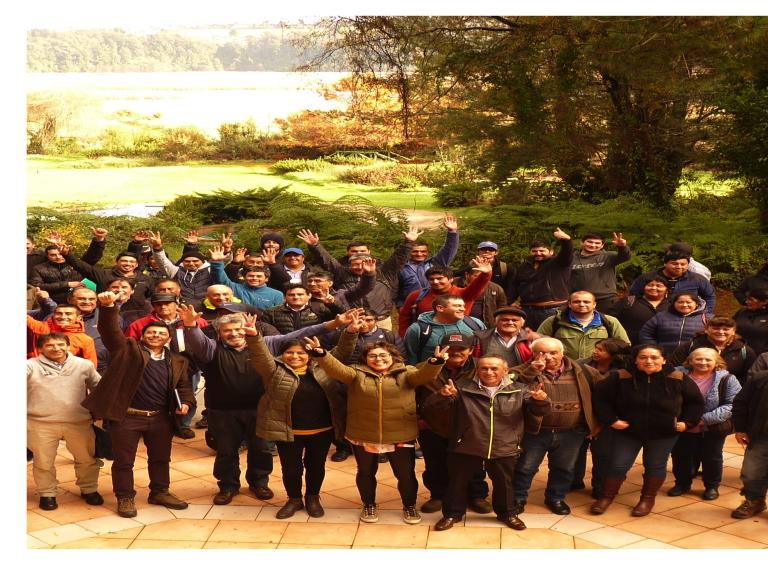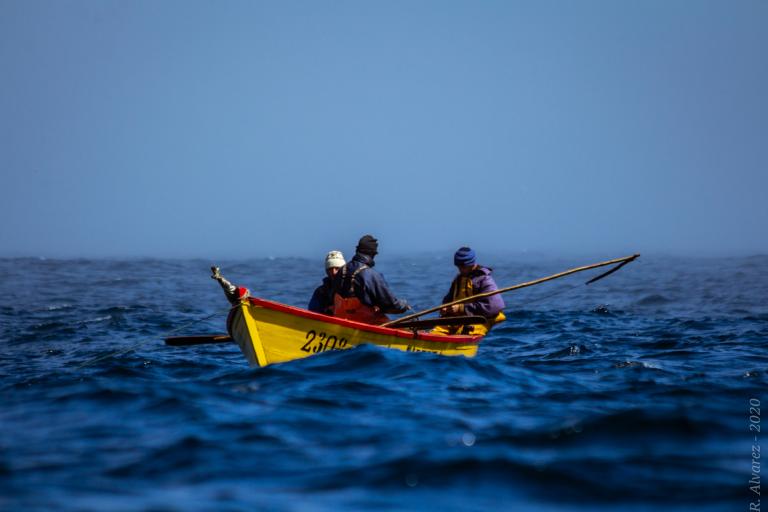

Ecosystem Risk Assessment in Chile
Learn how an ecosystem risk assessment was conducted for a multispecies finfish fishery in Chile
Ricardo Alvarez utilized the CARE tool to conduct an ecosystem risk assessment for a multispecies finfish fishery in the Los Ríos region of Chile. Part of a greater process to develop a Fishery Management Plan using EDF’s FISHE methodology, Ricardo was able to interview a diverse set of stakeholders and, using CARE, determine the major threats facing the fishery and ecosystem.

I would recommend CARE 100% - for anyone who needs to do an ecosystem assessment, and especially for those working in a data-limited, small-scale fishery, with limited time.
Ricardo Alvarez: "I am a marine biologist with extensive experience working with artisanal fishers on sustainable development projects. I grew up in Valdivia, Chile on the coast of southern Chile. My father was a fisher and Sierra is one of the species he caught. My background is in marine biology, but I have worked on projects related to the ocean from a variety of perspectives - fishers, fish, the marine environment. I started working with EDF as a consultant on their small-scale fishery projects in southern Chile and this role led me to using the CARE Tool."
CARE in Action
Expand AllAlong the coast of southern Chile, Sierra fishers of the Los Ríos region use hand lines to selectively fish Sierra (Scomberomorus sierra) and other finfish such as Corvina (Cilus gilberti). They navigate small skiffs, often powered by colorful sails, along the coast where numerous rivers converge with the ocean. It is thought that the migratory Sierra visit Los Ríos to spawn at the riverheads.
The 600 or so fishers are well-organized under three fishing federations. Historically lacking official management, the federations are working with the Chilean government to implement an ecosystem-based fishery management plan for their fishery.
Ricardo: "I found the CARE tool very useful, as it’s clearly structured, so anyone can download and apply it. Guided by the CARE framework, I interviewed 14 stakeholders, including fishers, academics, government employees, NGO representatives, and fisher advisors. These qualitative interviews provided me with the information I needed to complete the CARE analysis. The interviews also helped capture diverse local and expert knowledge and perspectives.
The CARE tool comes with a long list of qualitative questions. For each interview I went through the questions and used the tool’s spreadsheet to capture the responses. Once I input the responses into the tool’s excel spreadsheet, all of the information is combined, evaluated, and results automatically produced. A big advantage of CARE is that you complete the spreadsheet using the questions, but Excel does everything else. The tool is labeled with colors so you can explain, ‘look, this is the result of this evaluation,’…you don’t have to do any calculations, so it saves you a lot of work."
By utilizing qualitative questions, the tool can be both more inclusive of input from various types of stakeholders beyond just scientists, while also providing a more holistic and broader set of information to feed into the analysis. The results produced by the tool summarize which threats are most important to the ecosystem and fishery, and the level of risk of each threat, both now and in a climate-impacted future. All that’s left for the user to do is compile the results and communicate them to the involved stakeholders. Users are in a great position to take the summarized output of the tool and use it to make decisions and take management actions for their fishery.

Ricardo: "For the CARE analysis I conducted in Los Ríos, the ecosystem threat risk profile varied between interviewee groups, with different stakeholders ranking risks differently. However, across the board, the top three risks were identified as sea lions, overfishing, and contamination. Based on my interviews, these are the top three risks currently, and are projected to continue being the top three risks under a future of climate changes.
Overall, the CARE tool helped me to efficiently collect qualitative information and turn it into quantitative rankings for enhanced decision making. My team and I presented the results of the CARE analysis to the Sierra management committee and the leadership of the three fishing federations. We also communicated the results out to the fishery stakeholders more broadly."
The results of the CARE analysis showed the great threat of overfishing to the ecosystem, thereby stressing the importance of managing the fishery to improve ecosystem health. General conclusions were that climate variability is one of the important threats to keep track of, particularly climate change impacts such as temperature rise and changing pH. Contamination from upstream sources was also shown to be a threat to the fishery, highlighting that this small-scale fishery is part of a larger social-ecological system.

Following the use of CARE, as the next step in the FISHE process, the EDF team will conduct a Productivity and Susceptibility Analysis (PSA) to assess the relative risk of overfishing different species in Los Ríos, in order to sort and prioritize species for even stronger management.
Ricardo also plans to use CARE again, as part of the development of a fishery management plan in the Juan Fernández Islands.

CARE works well for small-scale fisheries with limited data and produces results that are coherent and logical for our system or how we see our system.
Advice from the User
Ricardo: "I would recommend CARE. The tool works for various reasons. First, you’re asking questions to people that have necessary, yet unknown information, so you can get the results. It allows you to evaluate information and data that you don’t have. And it’s a quick evaluation, very functional and useful.
To other CARE users I recommend taking advantage of the EDF staff for support and guidance. Meeting with the EDF staff that created and manages the tool was helpful for me, as they explained and taught how to use some of the details of the tool. I recommend you explore the tool with people that have used it before or ideally with those who created it. That can help you a lot. The EDF staff provided a lot of feedback and advice.
Another piece of advice is to take care in recruiting participants who really know the local environment and/or have experience in the fishery both past and present. This will ensure the responses are applicable to the fishery being analyzed and that changes over time are accounted for.
Overall, I recommend CARE, especially for anyone who needs to do a system evaluation of a small-scale, data-limited fishery and has limited time. Using the tool allows you to save time, have concrete results in a short time, and results will be based on the people involved in the management plan."

